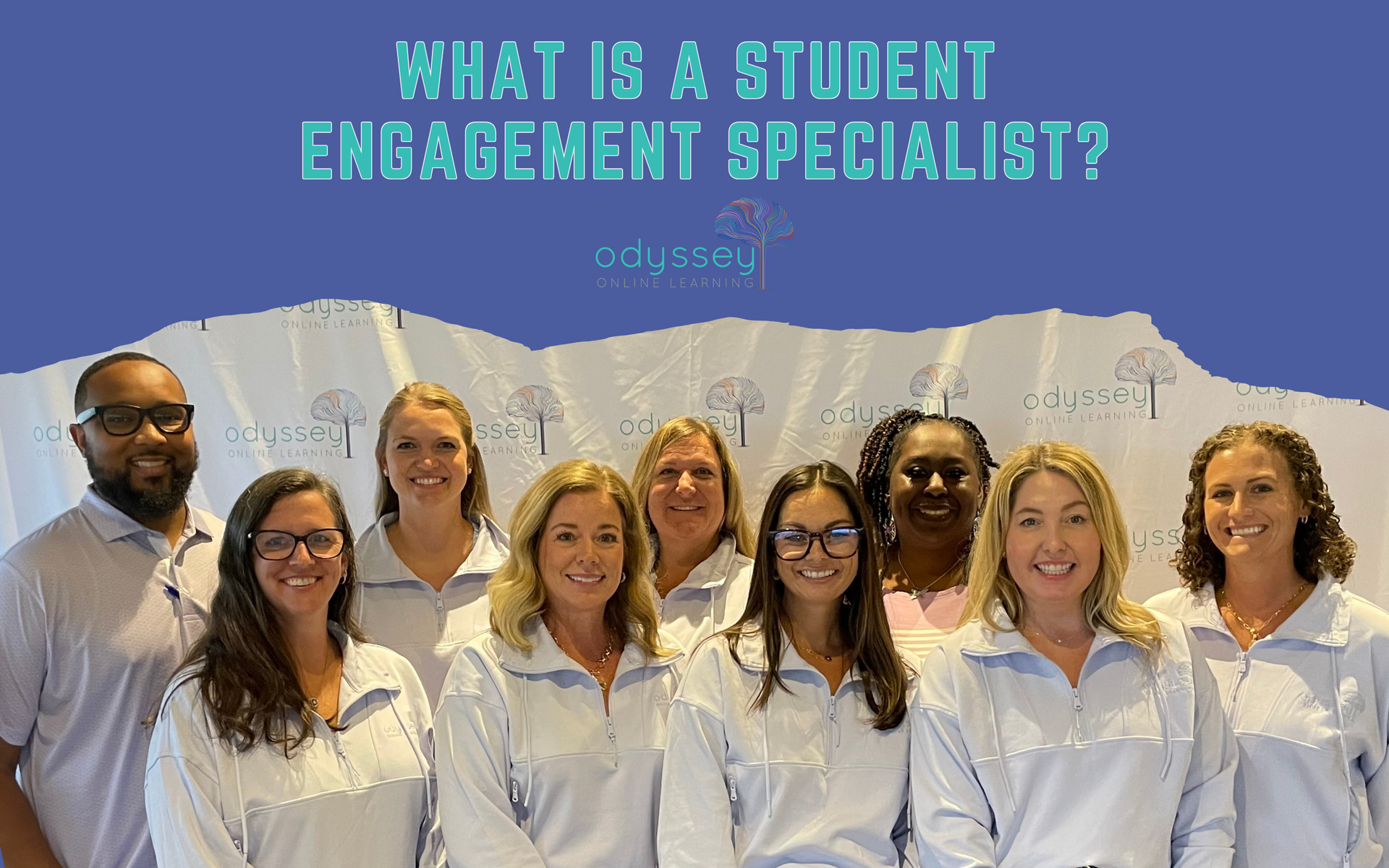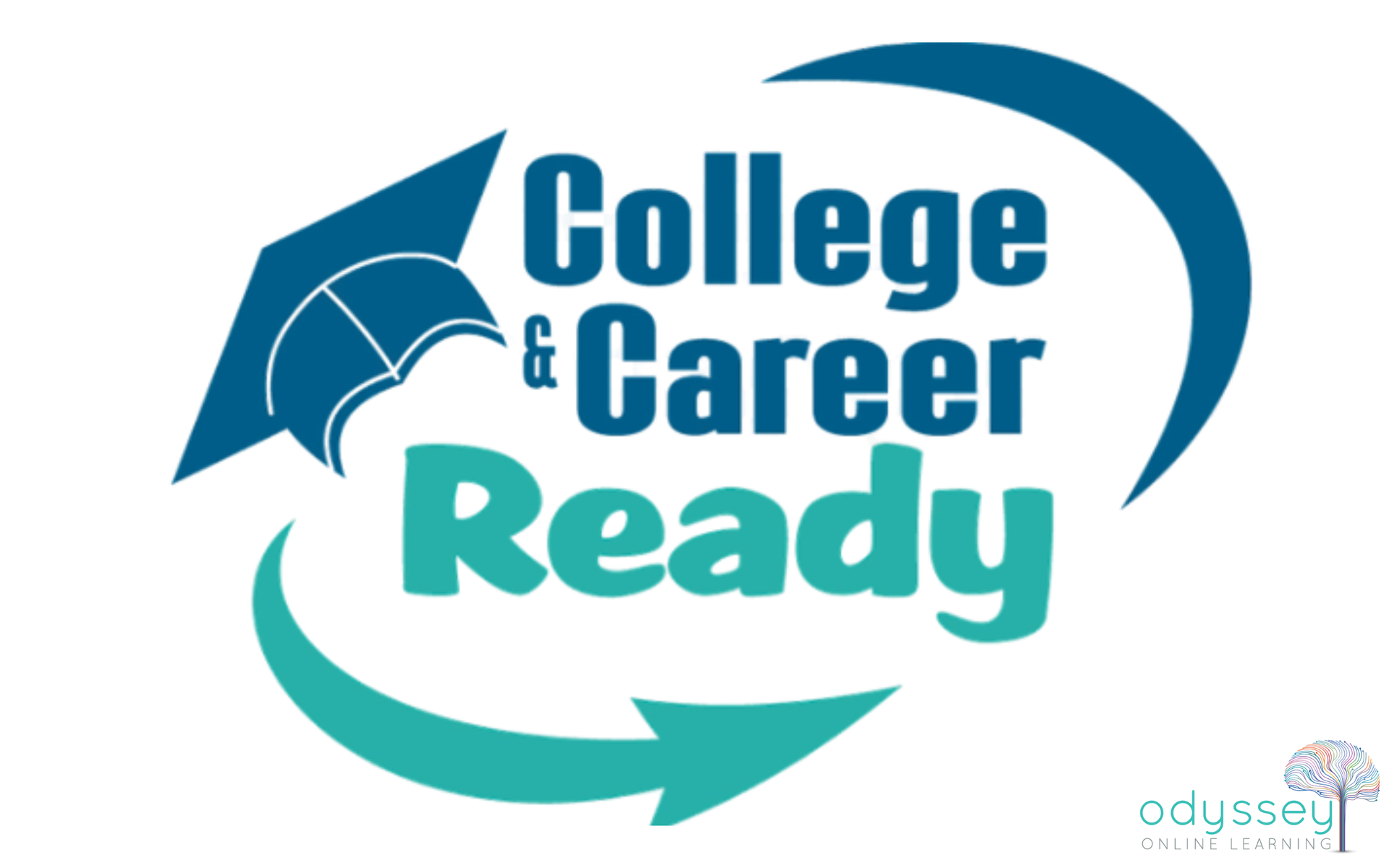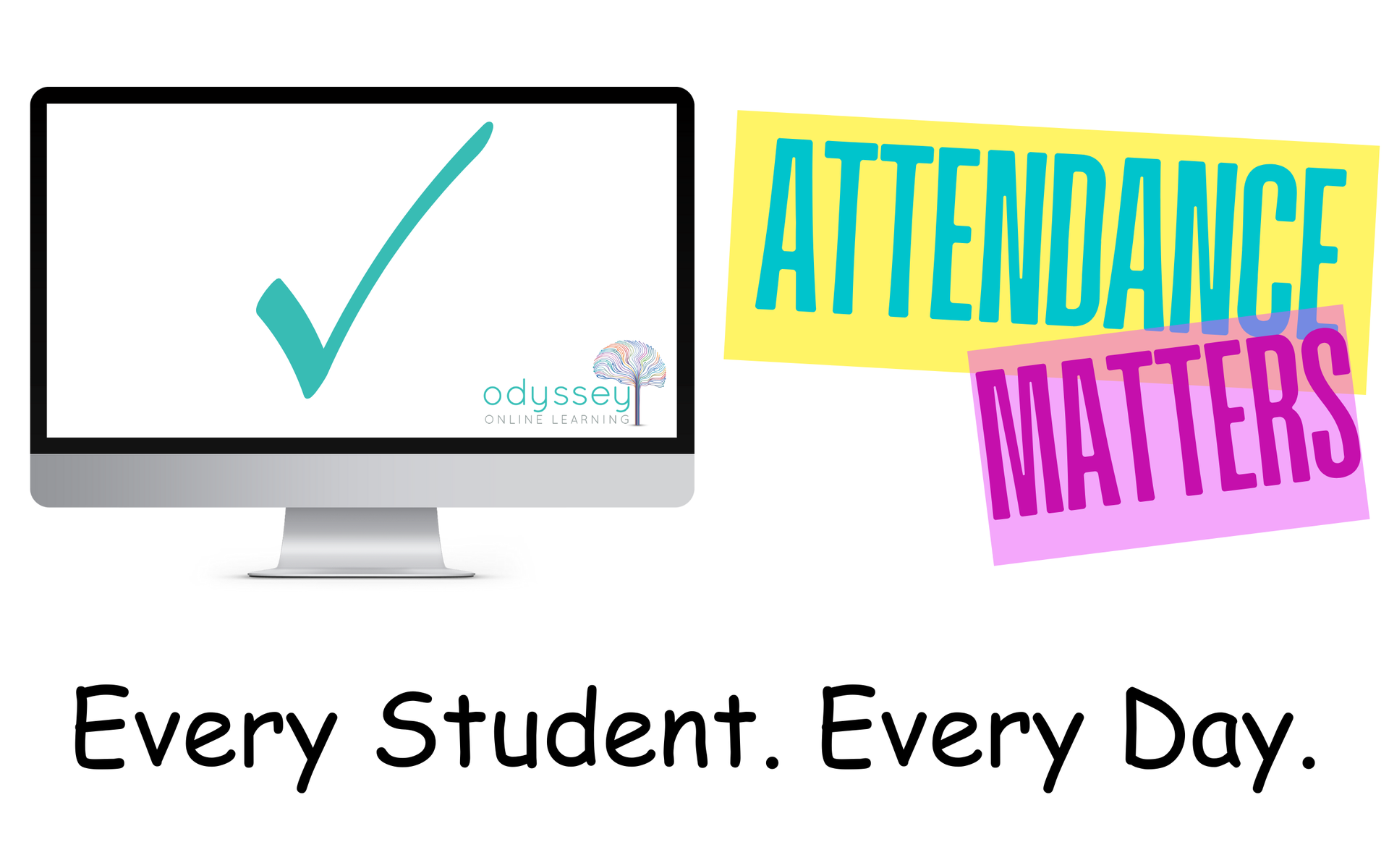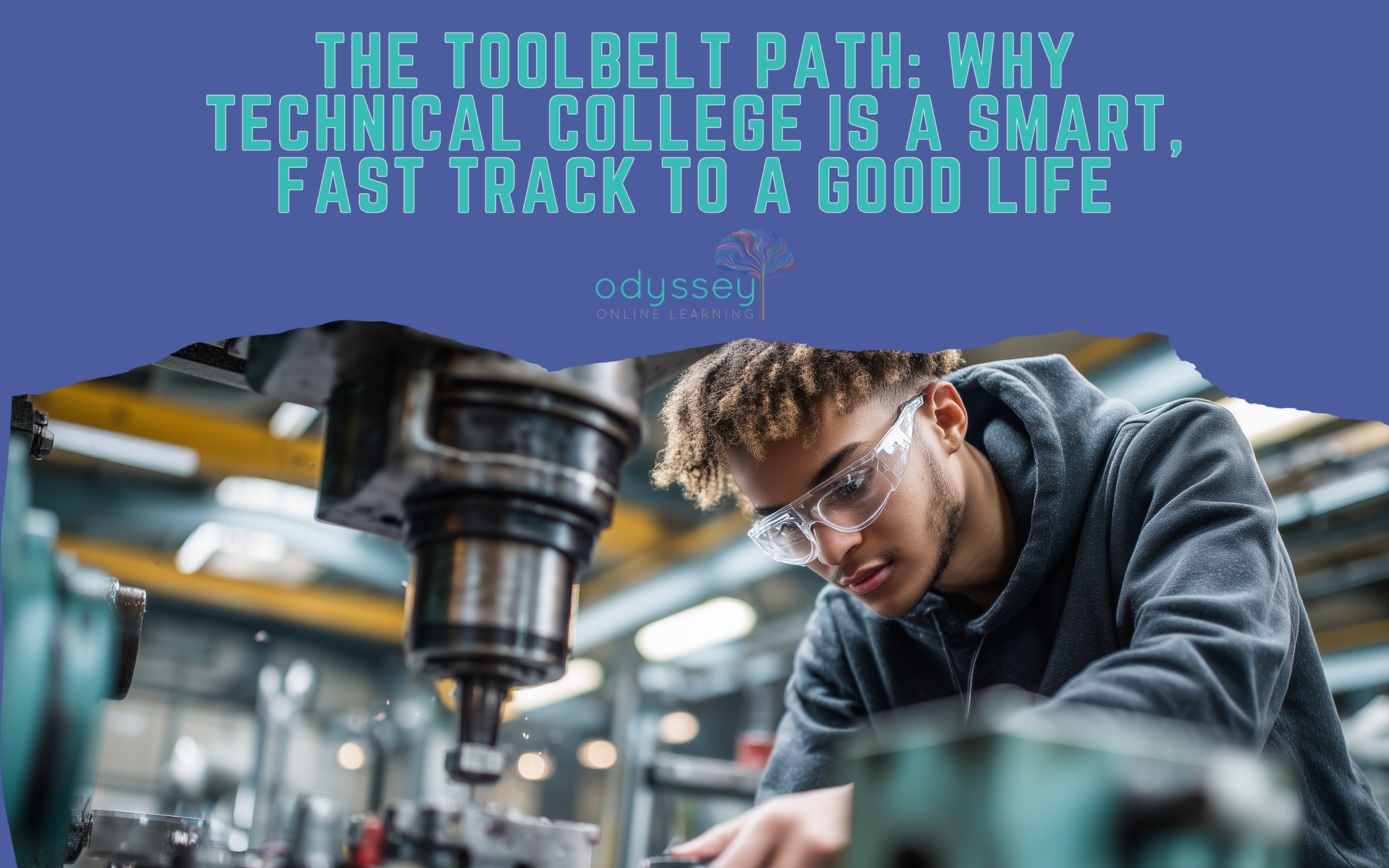By 7066634618
•
August 29, 2025
By: Dr. Colleen Dambman If you’re not feeling the 4-year college route, you’re not alone , and you’re not stuck. In my work with South Carolina’s high school students, I see smart, capable teens who want to start earning sooner, learn by doing, and avoid years of debt. Technical college and skilled-trade pathways offer exactly that: hands-on training, in-demand skills, and faster entry into solid careers (Soliz, 2023). At Odyssey Online Learning, we see many students who thrive when given the freedom to explore different career paths. Technical college is a strong option we encourage families to consider as part of a student’s Individual Graduation Plan (IGP). What “Trade School” Looks Like Now Today’s technical programs go far beyond “shop class.” You’ll find advanced manufacturing and mechatronics, HVAC with smart controls, welding for clean-energy projects, CDL logistics, medical assisting, and cybersecurity. Many programs pair coursework with paid apprenticeships , allowing you to earn while you learn, graduate with experience, and step directly into a job. A recent peer-reviewed synthesis finds that U.S. registered apprenticeships are associated with strong employment and earnings outcomes when programs include structured on-the-job learning and related instruction (Gallup, 2024). For OOL students, this means the skills you build in high school can directly connect with South Carolina’s technical college system. With flexible scheduling at OOL , you can focus on the courses that align with these future opportunities. Will it Pay Off? Short answer: yes , on average, and often quickly . A 2023 peer-reviewed review of postsecondary Career and Technical Education (CTE) concludes that short, technical credentials and two-year degrees often yield significant labor-market returns (Soliz, 2023). Translation: The right program matters, but the payoff is real, especially when programs are aligned with local employer demand. Specializing pays off . Students who take a coherent sequence of upper-level CTE courses tend to earn more in their early careers, amounting to about a 2% wage bump for each additional year of advanced CTE, while sampling lots of intro classes doesn’t add the same value (Kreisman & Stange, 2020). And CTE isn’t a track for “low-ability” students; it attracts teens with different strengths and interests (Kreisman & Stange, 2020). Apprenticeships multiply the benefits . Registered apprenticeships combine paid, on-the-job training with related classroom learning and are consistently linked to higher earnings and steadier employment after completion, especially when the programs are well-structured (Gallup, 2024). Our students are encouraged to take advantage of CTE and dual-enrollment options. Our counselors help families identify programs that match their students' strengths, whether in healthcare, IT, trades, or other high-demand fields. “But Aren’t Trade Jobs Disappearing?” Not in the skilled trades. Federal projections show continued or faster-than-average growth for many technician roles. For example, electrician employment is projected to grow 11% from 2023–2033 (U.S. Bureau of Labor Statistics [BLS], 2025a). HVAC technicians are projected to grow 9% over the same period (BLS, 2025b). And several clean-energy technician roles are among the fastest-growing jobs in the country (BLS, 2023). These jobs are also resilient to outsourcing and often include opportunities for overtime, advancement, and entrepreneurship. This is especially relevant for OOL families in South Carolina , where industries like manufacturing, logistics, and healthcare continue to expand. Technical careers are not just available; they are in high demand and growing. What About Debt and Timing? Technical pathways are typically shorter and more affordable than 4-year routes, and many apprenticeships pay you while you train (Gallup, 2024). In South Carolina, programs like SC•WINS and Workforce Scholarships for the Future can cover substantial (sometimes all) tuition and required fees in high-demand programs at our 16 technical colleges (SC Technical College System, n.d.; South Carolina Technical College System, 2022). Check your local campus for current eligibility and award amounts. Odyssey counselors work with students during IGP meetings to connect them with these scholarship opportunities. This ensures students graduate not just with a high school diploma but also with a clear plan for affordable next steps. A Day-in-the-Life (And a Path that Grows With You) Imagine that you complete your high school diploma at Odyssey Online Learning and then enroll in a one-year mechatronics certificate at a nearby technical college. By month two, you’re interning on a line that uses smart robotics. You step into a full-time role in under a year, then stack an advanced certificate (often with employer tuition help). Two years in, you’re earning steady wages with clear steps to lead tech or supervisor. If you catch the college bug later, many technical credits stack into an associate degree—and sometimes even a bachelor’s pathway (Soliz, 2023). We’ve seen OOL graduates take this very path, choosing technical college as a launchpad to strong careers , while keeping doors open for future degrees. How to Choose a High-Value Technical Path ● Start with strengths . Do you like solving puzzles, fixing things, helping people, or driving? Your interests map to clusters like manufacturing, IT, health, logistics, and construction. ● Verify local demand. Ask your local technical college’s career services which programs place quickly and which credentials employers ask for. ● Prioritize “earn-and-learn.” Apprenticeships and paid internships boost completion and earnings (Gallup, 2024). ● Go for depth, not dabbling. Concentrating on an upper-level CTE sequence beats sampling lots of intro classes (Kreisman & Stange, 2020). ● Ask about stackability. Choose programs where certificates roll into diplomas or degrees so you can upskill without starting over (Soliz, 2023). OOL counselors are ready to help students with all five of these steps, making sure their high school journey sets them up for success after graduation. Quick Next Steps Scan high-demand program lists and scholarship pages at your local technical college; many campuses advertise “no-cost tuition” for eligible programs (SC Technical College System, n.d.; South Carolina Technical College System, 2022). Explore Apprenticeship Carolina and ask employers about registered youth or adult apprenticeships, which combine wages with classroom learning (Apprenticeship Carolina, n.d.). Attend your annual IGP with your school counselor to translate your interests into a short list of programs and to build a plan. Reality-check the outlook. Look up your target roles in the Bureau of Labor and Statistics (BLS) Occupational Outlook Handbook to compare growth, typical pay, and training requirements (BLS, 2025a; 2025b). At OOL, your annual IGP is the perfect place to begin these conversations. T ogether, we’ll connect your passions with real opportunities. Bottom Line If a 4-year campus isn’t your dream, or just isn’t realistic right now, technical college and apprenticeships are not a consolation prize. For many students, they’re a faster, more affordable, and more direct route to real skills and real paychecks. The recent research is clear: when you pursue a technical pathway, align with local demand, and (ideally) earn while you learn, you set yourself up for strong early-career outcomes and a platform to keep growing (Gallup, 2024; Kreisman & Stange, 2020; Soliz, 2023). At Odyssey Online Learning, we believe every student’s path is unique . For some, that means a four-year university. For others, the technical college and apprenticeship route is the smartest, fastest, and most affordable path to success. With South Carolina’s scholarships, employer partnerships, and in-demand job growth, OOL students have an incredible opportunity to build strong careers right out of high school without years of debt. Your future is wide open. Let’s find the path that excites you most! References Apprenticeship Carolina. (n.d.). Apprenticeship Carolina – a division of the SC Technical College System. https://www.apprenticeshipcarolina.com/ Gallup, A. (2024). What we know about registered apprenticeship: A systematic review and synthesis of 30 years of empirical research. Economic Development Quarterly, 38(1), 25–39. https://doi.org/10.1177/08912424231196792 Kreisman, D., & Stange, K. (2020). Vocational and career tech education in American high schools: The value of depth over breadth. Education Finance and Policy, 15(1), 11–44. South Carolina Technical College System. (2022). Workforce Scholarships for the Future [PDF handout]. https://www.sctechsystem.edu/downloads/SCWorkforceScholarshipsForTheFuture_Handout.pdf South Carolina Technical College System. (n.d.). SC•WINS Scholarship Program. https://www.sctechsystem.edu/sc-wins/ U.S. Bureau of Labor Statistics. (2023, October). Industry and occupational employment projections overview and highlights, 2022–32. Monthly Labor Review. https://doi.org/10.21916/mlr.2023.24 U.S. Bureau of Labor Statistics. (2025a). Electricians: Occupational Outlook Handbook. https://www.bls.gov/ooh/construction-and-extraction/electricians.htm U.S. Bureau of Labor Statistics. (2025b). Heating, air conditioning, and refrigeration mechanics and installers: Occupational Outlook Handbook. https://www.bls.gov/ooh/installation-maintenance-and-repair/heating-air-conditioning-and-refrige ration-mechanics-and-installers.htm U.S. Bureau of Labor Statistics. (2025, April 18). Occupation Finder. Occupational Outlook Handbook. https://www.bls.gov/ooh/occupation-finder.htm











Share On: